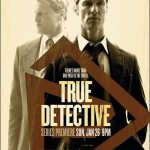Apocalypto (2006)

Directed by Mel Gibson, Apocalypto is an intense, gripping film that takes audiences deep into the heart of the ancient Mayan civilization, just before its collapse. With stunning cinematography, raw performances, and a visceral portrayal of survival and sacrifice, Apocalypto stands as one of Gibson’s most audacious and visually captivating films. The movie is an immersive experience, using a mostly indigenous cast and speaking in the ancient Yucatec Maya language, which heightens its authenticity and impact.

Plot Summary:
The film follows Jaguar Paw (Rudy Youngblood), a young hunter from a small village in the Mayan jungle. When a group of brutal raiders, led by the merciless Zero Wolf (Raoul Trujillo), attack his village, Jaguar Paw is captured and taken along with other villagers to the grand city of the Maya. The city is a place of staggering opulence and terrifying human sacrifice, ruled by a society obsessed with appeasing their gods in the wake of their failing crops and foreboding omens.
Jaguar Paw, however, manages to escape, and the second half of the film focuses on his desperate fight for survival as he attempts to return to his family. The chase is brutal, and Jaguar Paw’s determination to survive for the sake of his loved ones becomes the emotional core of the narrative. What ensues is a breathtaking, relentless pursuit across the jungle, with life-or-death stakes and jaw-dropping visuals.
Themes & Visuals:
Apocalypto explores themes of survival, human sacrifice, fate, and the destruction of civilizations. At its heart, it is a story of one man’s journey to survive and protect his family in the face of overwhelming odds. The film delves into the brutal, hierarchical nature of ancient Mayan society, focusing on the tension between the destruction of the old world and the rise of the new.
Visually, the film is a masterpiece. From the lush jungles to the terrifying grandeur of the Mayan city, the cinematography is breathtaking. The wide, sweeping shots of the dense, wild jungle contrast sharply with the stark, imposing architecture of the Mayan city, symbolizing the tension between nature and civilization. The graphic violence, including the chilling depictions of human sacrifice, serves to amplify the intensity of the film’s themes, but it is never gratuitous. Instead, it feels necessary to convey the savage desperation of a world on the brink of collapse.
The use of practical effects, including makeup and prosthetics, is exceptional, particularly in the depiction of human sacrifice and the realistic portrayal of injuries and survival in the wild. The sound design is also noteworthy, with the jungle itself becoming a character in the film, filled with the sounds of danger and the rhythms of life.
Performances:
Rudy Youngblood gives a breakout performance as Jaguar Paw. His portrayal of the character’s resilience, fear, and love for his family is powerful and emotional, particularly in the latter half of the film as he desperately tries to escape his captors. Youngblood’s physicality and expressive eyes convey the raw survival instincts and emotional weight of his character’s journey.
Raoul Trujillo as Zero Wolf, the relentless leader of the raiders, brings a chilling intensity to his role. His performance provides a stark contrast to Jaguar Paw’s desperation, embodying the cruel, impersonal nature of the Mayan elite who view human life as a means to an end. The supporting cast, made up mostly of indigenous actors, is also impressive, adding authenticity and gravitas to the film’s portrayal of Mayan society.
Action & Special Effects:
The action sequences in Apocalypto are brutal and immersive, particularly in the second half of the film when Jaguar Paw is on the run. The film is filled with heart-pounding chase sequences through the jungle, with thrilling, hand-to-hand combat and daring escapes. The tense cat-and-mouse pursuit between Jaguar Paw and his pursuers creates a relentless rhythm that keeps the audience on the edge of their seats.
The special effects, while not heavily reliant on CGI, are impactful when used. The violence in the film, especially during the sacrificial scenes, is graphic and intense, but it is done with such purpose that it feels essential to the story. The makeup, prosthetics, and practical effects used to create the realistic depictions of human sacrifice and injury are impressive.











